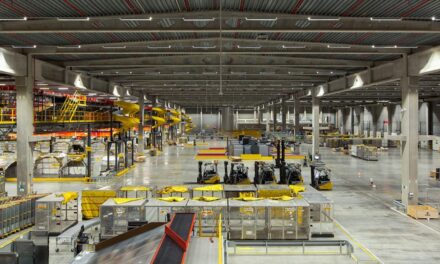
DHL’s 3D vision
DHL’s latest Trend Report focuses on 3D Printing and the Future of Supply Chains. The report – which has been released today (29 November) – says that while the 3D printing market is estimated to grow between US$180bn and US$490bn by 2025 it is likely that the technology will “not become a substitute for mass-production but a complementary process”.
Matthias Heutger, Senior Vice President, DHL Customer Solutions & Innovation, said that 3D Printing “is not a magic bullet that will render factory mass production and manufacturing obsolete”.
Heutger continued: “Its exciting potential lies more in its capability to simplify the production of highly complex and customizable products and spare parts – and this could bring logistics and manufacturing closer together than ever before.”
Also known as additive technology, 3D printing involves manufacturing products by layering heated plastic or metal injected from the nozzle of a 3D printer onto a plate to create a three-dimensional object. According to DHL: “It can lead to improved product quality, multiple products being made by a single printer, new types of products – and new supply chain strategies and models.”
The factors currently limiting more widespread adoption of 3D printing include lack of management knowledge, economic and technological issues. DHL argued that: “As well as facing warranty, liability and intellectual property issues, 3D printing needs to become faster, more agile and more advanced before it can become a core production technology.”
Markus Kückelhaus, Vice President Innovation and Trend Research, DHL Customer Solutions & Innovation, commented: “Not all products should, can or will be 3D printed. But encouraged by opportunities for greater customization, less waste, and more localized manufacturing and delivery, companies across many industry verticals are showing increasing interest in using 3D printing.”
Kückelhaus added that DHL believes: “3D printing will have the most impact in the medium term on logistics in spare parts and individualized parts manufacturing.”
Furthermore, DHL anticipates that “spare parts on demand” could involve logistics companies in the supply chain “in a revolutionary new way by printing the parts en route to delivering them to the customer”.
Heutger explained: “As manufacturers adapt their production processes, new opportunities and challenges to the supply chain will be created. At DHL, we look forward to working with customers and partners to jointly explore new solutions and unlock the potential of 3D printing and integrate it into logistics and future supply chains.”
The Trend Report “3D Printing and the Future of Supply Chains” is available for free download at www.dhl.com/3Dprinting












